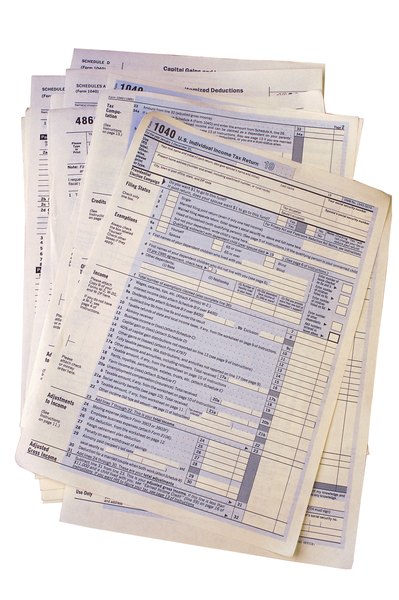How to Report a Wash Sale on Schedule D
Report an investment wash loss on Schedule D.
Comstock/Comstock/Getty Images
Typically, when you sell a capital investment at a loss, you're able to use this capital loss to offset any capital gains you may have realized through successful investments. However, the wash-sale rule prevents you from doing this, but there are ways to avoid the wash-sale rule. The IRS imposes a wash-sale rule to regulate how certain securities are sold by disallowing taxpayers from claiming artificial losses on their federal tax return.
What Is a Wash Sale?
According to the IRS, “A wash sale occurs when you sell or otherwise dispose of stock or securities (including a contract or option to acquire or sell stock or securities) at a loss and, within 30 days before or after the sale or disposition, you:
- Buy substantially identical stock or securities,
- Acquire substantially identical stock or securities in a fully taxable trade,
- Enter into a contract or option to acquire substantially identical stock or securities, or
- Acquire substantially identical stock or securities for your individual retirement arrangement (IRA) or Roth IRA.”
For example, say you purchased 100 shares of XYZ stock for $23 and then subsequently sold the shares for $20 at a loss, this alone will not trigger the wash-sale rule. However, if within 30 days of the sale of your stock you then buy 100 shares of the same stock for $22, this is considered a wash sale. You could not write off the loss of $300 in price difference you realized from when you sold the stock and purchased new shares. Instead, you have to add this $300 to the $2,200 cost of the new shares. This changes your cost basis to $2,500 for the 100 shares you purchased the second time, which works out to $25 per share.
Avoiding a Wash Sale
There are a couple of things you can do to avoid a wash sale. First, you can make sure that you do not buy the same or substantially similar stock 30 days before or after you sell your stock at a loss. You can also purchase a substantially dissimilar stock or exchange-traded fund (EFT). It’s also important to keep in mind that if you sell your stocks for a profit during this 60 day time frame (30 days before and 30 days after) then you still will owe Uncle Sam for these gains.
Reporting Wash Sales
All sales of investments such as stocks or other securities are reported on IRS Form 8949, Sales and Other Dispositions of Capital Assets, and then inputted on a Schedule D (Form 1040), Capital Gains and Losses. First, you must complete IRS Form 8949 before going on to complete lines 1b, 2, 3, 8b, 9, or 10 of Schedule D. You will find the information to complete Form 8949 on IRS Form 1099-B, Proceeds from Broker and Barter Exchange Transactions, which is sent out by your brokerage annually and should report what you paid for the security. If this information is not reported on your Form 1099-B, then you will need to go through your own records to obtain it.
In part 1, column a, of Form 8949, you will need to enter a description of the item and how many shares were purchased. In column F, enter “W” to denote the transaction was a wash sale, and the nondeductible part of said wash sale in column G. Once you’ve completed all applicable columns of Form 8949, and have reported all wash sales, you can easily complete your Schedule D by following the instructions. If you run into problems while reporting a wash sale on Schedule D, visit the IRS website or consult with a qualified tax professional for more guidance.
References
- IRS: Form 8949
- IRS: Form Schedule D
- IRS: 2018 Instructions for Schedule D (2018)
- IRS: Instructions for Form 8949 (2018)
- Wash-Sale Rules | Avoid this tax pitfall | Fidelity
- IRS: About Form 1099-B, Proceeds from Broker and Barter Exchange Transactions
- MoneyCrashers: Tax Form 8949 – Instructions for Reporting Capital Gains & Losses
Tips
- Review all your brokerage statements carefully to be sure you don't overlook a wash transaction.
Warnings
- Although you cannot deduct a wash sale loss, you must report any gains you made on the trade.
Writer Bio
Tara Thomas is a Los Angeles-based writer and avid world traveler. Her articles appear in various online publications, including Sapling, PocketSense, Zacks, Livestrong, Modern Mom and SF Gate. Thomas has a Bachelor of Science in marine biology from California State University, Long Beach and spent 10 years as a mortgage consultant.

